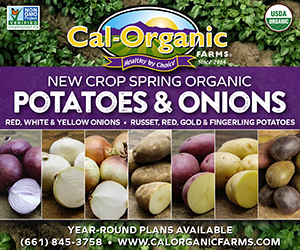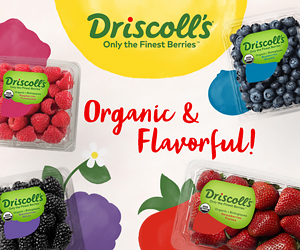Initial results from a new study by the Rodale Institute’s California Organic Center have revealed cover-crop mulch to be very effective at suppressing weeds and boosting yields in organic veg crops.
Supported by a 2022 California Department of Food and Agriculture grant, the multi-year Rodale study is exploring the performance of short-, medium-, and long-season veg crops in cover-crop residue.

Dr. Jacob Pecenka, Postdoctoral Research Associate, California Organic Center
“When you speak with organic growers, one of the biggest challenges they cite is weeds and the high labor costs invested into mechanically removing them,” said Dr. Jacob Pecenka, postdoctoral research associate at the Ventura County-based California Organic Center and the study’s project lead. “This is especially true in organic systems with nearly no viable chemical methods to control weeds. One possible practice that could assist growers in weed management is the use of terminated cover crops as a physical barrier.”

Pre Veggie Transplant. Bare soil beds left and crimped cover crop on right
The first experimental round of the study kicked off in 2023 and compared organic yellow summer squash, bell peppers, and eggplant grown in the residue of a terminated rye/pea cover crop with those same three veg crops grown in bare soil.
“The rye is a grass that produces a large amount of above-ground biomass and pairs well with the peas, which, as a legume, can create relationships with microorganisms to fix nitrogen and improve soil fertility,” said Pecenka of the cover crop selection. “We chose the three vegetables because they represent some of the crops that are commonly grown in the region and are popular vegetables that can be harvested over multiple weeks. The main difference between the crops is the timing of their growth. Yellow summer squash harvest begins within four weeks after transplanting, while eggplants have a much longer growth and development timing (eight to ten weeks after transplanting), and bell peppers are somewhere in between.”

bare soil veggies one month after transplanting

cover crop veggies one month after transplanting
For all test beds, the cover crop was terminated by the Rodale-invented roller-crimper, followed by the application of a thick silage tarp for two weeks. The veg crops were then transplanted into the cover-crop residue.
“After our first year of data collection, we found some really promising results,” Pecenka said. “We found that bare-soil beds had 110 percent greater weed biomass on the soil surface compared to the cover-cropped beds.”
Pecenka noted that crop yield was also “greatly affected,” with the summer squash grown in cover-cropped beds yielding 72 percent more than the same crop grown in bare soil. The difference in eggplant yield was even more pronounced, with the cover-cropped beds producing a 185 percent greater harvest than the bare-soil beds. (Unfortunately, a swift and devastating invasion by pepper weevils meant there was no pepper harvest data to analyze from 2023, but Pecenka is hopeful a more proactive pest management approach will prevent that from happening again this year.)

bare soil eggplant transplants without any weeding

cover crop eggplant transplants without weeding
Pecenka said he was very surprised by how quickly the differences emerged between the cover-cropped plots and the bare-soil beds.
“By three to four weeks post transplanting, the vegetables that were in the cover-cropped beds looked dramatically bigger, while some of the plants in the bare-soil beds were stunted or failed to develop and eventually failed to produce a harvestable yield and remained significantly smaller by the end of the experiment,” Pecenka said.
“Both treatments received the same irrigation and faced the same environmental challenges, but the microclimate that was created around the vegetables transplanted into cover-crop residue appeared to be essential in giving the plants a ‘boost’ that helped them grow at a much faster pace.”
Pecenka noted that an obvious benefit of such a boost is that farmers growing in cover-crop mulch could harvest and get product to market more quickly.
In terms of other observations from the study, Pecenka cited water infiltration and beneficial insects.
“Water infiltration rates for the bare-soil beds were much slower and over 200 percent longer than the cover-cropped beds,” he said. “Through collections of soil insects, we also found significantly higher numbers of beneficial arthropods such as spiders and ground beetles in cover-cropped beds than the bare-soil beds.”
"After our first year of data collection, we found some really promising results.” Dr. Jacob Pecenka
Pecenka said he will be repeating the study again this year, which he hopes will confirm his initial results.
“It is important that we validate the positive findings from 2023 with a replicated field season in 2024,” he said. “Hopefully, we find a similar trend that gives us more confidence to share the successes with regional growers and advocate for using some of these practices on their own farms to improve both the health of the soil and the economic viability of their operations.”






